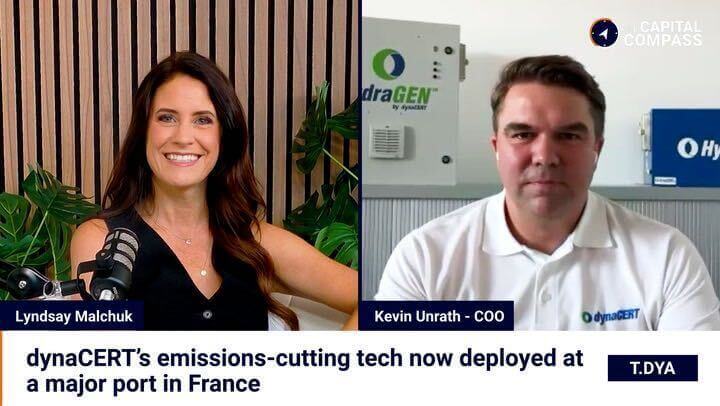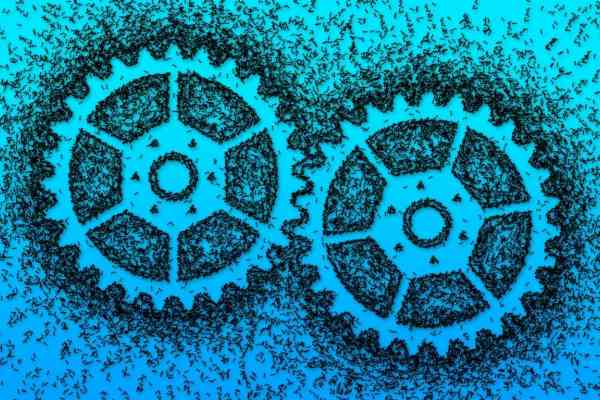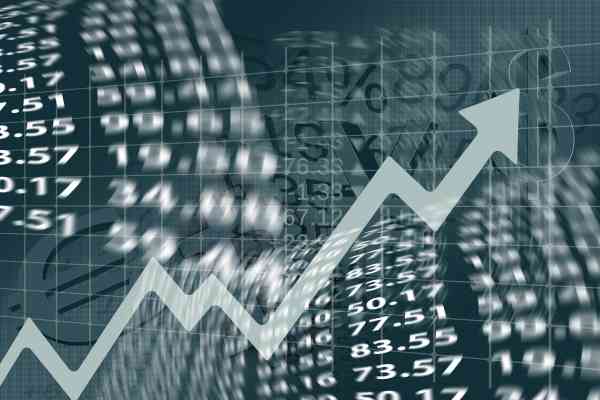July 30th, 2025 | 07:25 CEST
Green returns – From stock market stars to comeback hopes: dynaCERT, Siemens, Schneider Electric
The economy is under pressure. The effects of the tariff deal between the EU and the US are now compounding existing risks, such as geopolitical tensions and low productivity in Germany. One might assume that initiatives for greater sustainability and lower CO2 emissions would fall by the wayside in the current environment. However, there are business models that are both green and offer clear prospects for returns. We present Siemens, Schneider Electric, and dynaCERT.
time to read: 3 minutes
|
Author:
Nico Popp
ISIN:
DYNACERT INC. | CA26780A1084 , SIEMENS AG NA O.N. | DE0007236101 , SCHNEIDER ELEC. INH. EO 4 | FR0000121972
Table of contents:

"[...] We are committed to stay as the number one Canadian and global leader in the Hydrogen-On-Demand diesel technology [...]" Jim Payne, CEO, dynaCERT Inc.
Author
Nico Popp
At home in Southern Germany, the passionate stock exchange expert has been accompanying the capital markets for about twenty years. With a soft spot for smaller companies, he is constantly on the lookout for exciting investment stories.
Tag cloud
Shares cloud
Sustainability remains a growth area – Siemens is doing it right
According to estimates by MarketsandMarkets analysts, the market for green technologies and sustainability will grow from USD 25.47 billion today to USD 73.9 billion by 2030. This corresponds to a robust annual growth rate of 10%. The study shows that the current uncertain global economic situation is not having a significant impact on growth in sustainable technologies. However, looking at the actual mood in industry, there are already signs of a wait-and-see attitude – especially companies that depend on small and medium-sized businesses are seeing poorer payment practices and a lower willingness to invest.
But there are rays of hope. Siemens has strategically focused on the megatrends of digitalization, AI growth, e-mobility, urbanization, and climate change. Specifically, Siemens is active in the areas of industrial automation, building automation, and rail transportation. This diverse field of activity offers the Company the opportunity to benefit from the green transformation in a variety of ways. Siemens itself estimates that around 90% of its own business helps customers achieve positive sustainability effects. With an order backlog exceeding EUR 100 billion, Siemens is also extremely well positioned – it would take a lot before employees at Siemens would ever have to face forced company shutdowns.
Environmental protection and returns – Schneider Electric combines both
When Siemens generates revenue, the environment also benefits: The Company measures its impact using the DEGREE framework, which includes ambitious goals such as avoiding over 1,000 million tons of customer emissions by 2030 and achieving net-zero greenhouse gas emissions across its entire value chain by 2050. The Company's offerings sold in fiscal year 2024 are expected to save around 144 million tons of greenhouse gas emissions over their lifetime.
Schneider Electric also specializes in automation and energy management. The Company was named the world's most sustainable company by Corporate Knights for the second time in five years. According to its own figures, Schneider Electric has helped to save and avoid almost 700 million tons of CO2. After record revenues in 2024, Schneider Electric expects organic growth of 7% to 10% in 2025 and an improvement in its adjusted EBITDA margin of 50 to 80 basis points. The figures show that sustainability and healthy profits are not mutually exclusive.
dynaCERT reduces costs and saves CO2 – A comeback in the making
Canadian industrial supplier dynaCERT is also hoping for substantial profits. The Company offers HydraGEN™, a patented technology that makes diesel engines more efficient and environmentally friendly. Tests by independent experts have shown significantly reduced nitrogen and CO2 emissions. At the same time, fuel consumption decreased, and the replacement intervals for costly particulate filters were extended. In recent quarters, dynaCERT has increasingly focused on the needs of industrial customers, where heavy-duty diesel engines are still widely used. In this segment, dynaCERT's technology offers significant leverage. As recent reports show, dynaCERT continues to be successful in this area.
The Company also offers HydraLytica™, a telematics software that tracks and records fuel consumption and greenhouse gas emissions in real time. This generates valuable data for generating CO2 certificates. The system automates the reporting and analysis of fuel savings, emission reductions, and CO2 credits, making it easy for dynaCERT customers to become more sustainable and even generate revenue. Especially in these economically challenging times, small and medium-sized customers are reluctant to make significant investments. A conversion kit from dynaCERT pays for itself in less than a year, depending on the specific application, and is therefore perfectly suited to the current market environment.
dynaCERT shares on the verge of a turnaround? New order could point the way forward
The dynaCERT share price has recently climbed sharply, following news that the Company is deploying its technology at the port of Rochefort-Tonnay - a move that could signal further revenue potential. However, dynaCERT is still posting a loss of around 32% for the year as a whole, indicating that the operational turnaround is not yet reflected in the share price. This sets dynaCERT apart from companies like Siemens and Schneider Electric, both of which have generated steady returns in recent years. The contrast suggests that the market is fairly reflecting the Company's operating performance and that, unlike dynaCERT, there is less room for surprises. Despite good first-quarter figures, analysts had expected more from Schneider Electric.
There is a good chance that dynaCERT's comeback story will also offer shareholders a more promising outlook in the coming weeks and months than the proven sustainability leaders Siemens and Schneider Electric. However, further orders will be decisive in this regard. How the Company assesses its chances is discussed in a recent interview between Stockhouse presenter Lyndsay Malchuk and dynaCERT COO Kevin Unrath.

Conflict of interest
Pursuant to §85 of the German Securities Trading Act (WpHG), we point out that Apaton Finance GmbH as well as partners, authors or employees of Apaton Finance GmbH (hereinafter referred to as "Relevant Persons") may hold shares or other financial instruments of the aforementioned companies in the future or may bet on rising or falling prices and thus a conflict of interest may arise in the future. The Relevant Persons reserve the right to buy or sell shares or other financial instruments of the Company at any time (hereinafter each a "Transaction"). Transactions may, under certain circumstances, influence the respective price of the shares or other financial instruments of the Company.
In addition, Apaton Finance GmbH is active in the context of the preparation and publication of the reporting in paid contractual relationships.
For this reason, there is a concrete conflict of interest.
The above information on existing conflicts of interest applies to all types and forms of publication used by Apaton Finance GmbH for publications on companies.
Risk notice
Apaton Finance GmbH offers editors, agencies and companies the opportunity to publish commentaries, interviews, summaries, news and the like on news.financial. These contents are exclusively for the information of the readers and do not represent any call to action or recommendations, neither explicitly nor implicitly they are to be understood as an assurance of possible price developments. The contents do not replace individual expert investment advice and do not constitute an offer to sell the discussed share(s) or other financial instruments, nor an invitation to buy or sell such.
The content is expressly not a financial analysis, but a journalistic or advertising text. Readers or users who make investment decisions or carry out transactions on the basis of the information provided here do so entirely at their own risk. No contractual relationship is established between Apaton Finance GmbH and its readers or the users of its offers, as our information only refers to the company and not to the investment decision of the reader or user.
The acquisition of financial instruments involves high risks, which can lead to the total loss of the invested capital. The information published by Apaton Finance GmbH and its authors is based on careful research. Nevertheless, no liability is assumed for financial losses or a content-related guarantee for the topicality, correctness, appropriateness and completeness of the content provided here. Please also note our Terms of use.




